Growing Older 3
Stacy Ikard
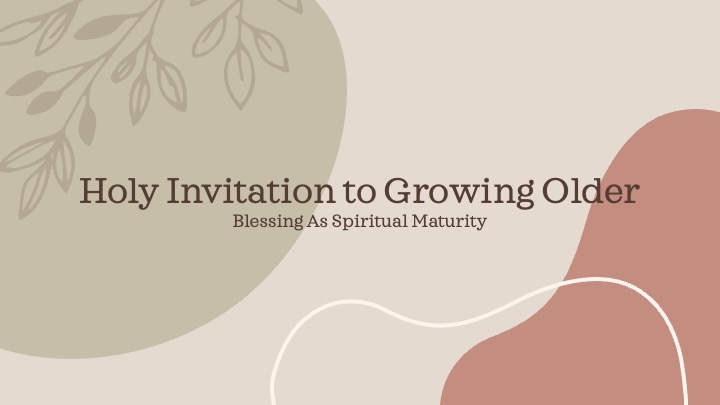
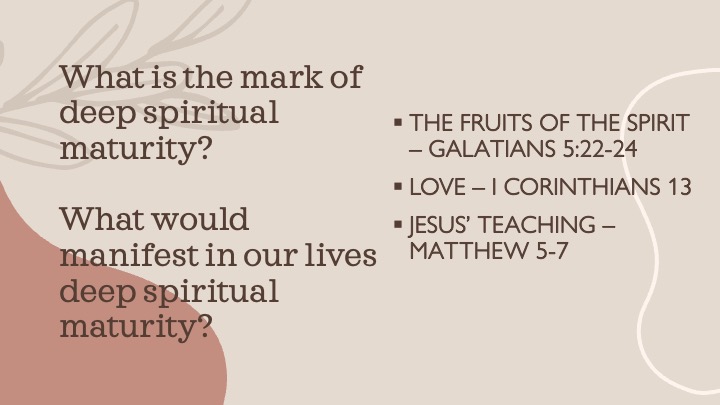
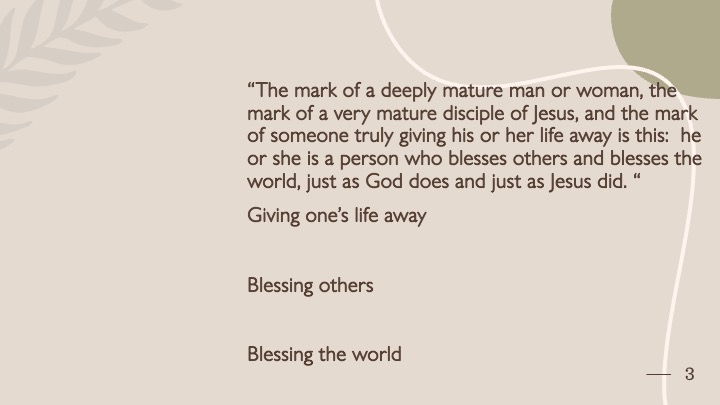
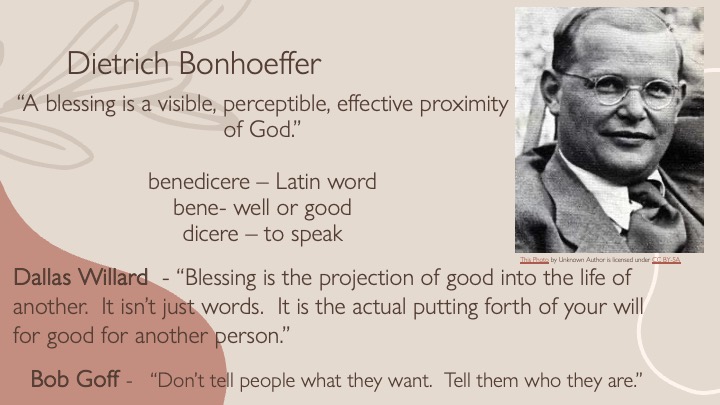
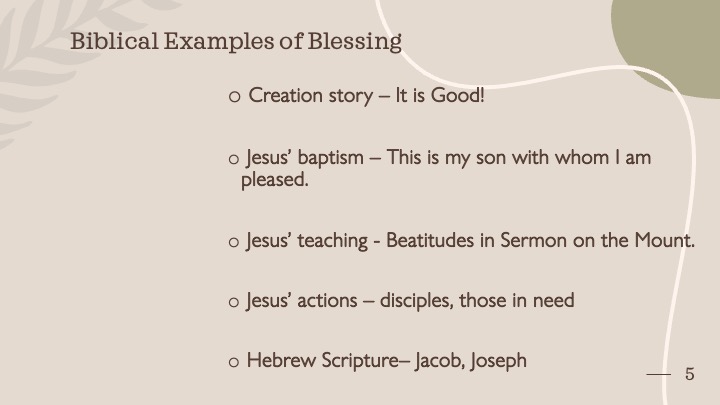
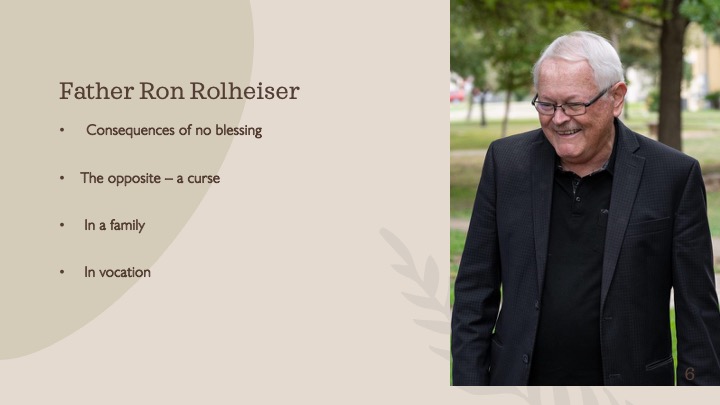

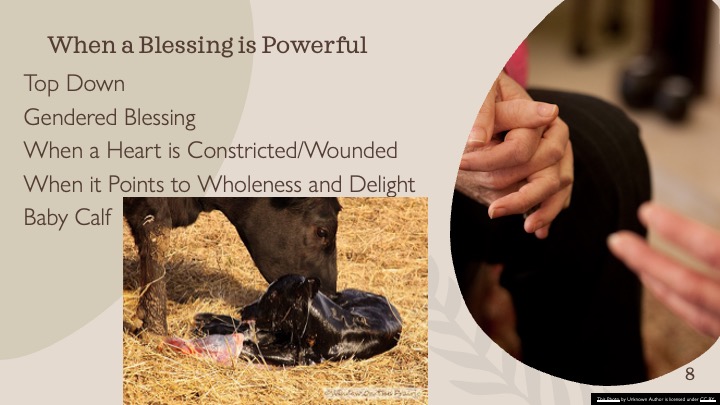
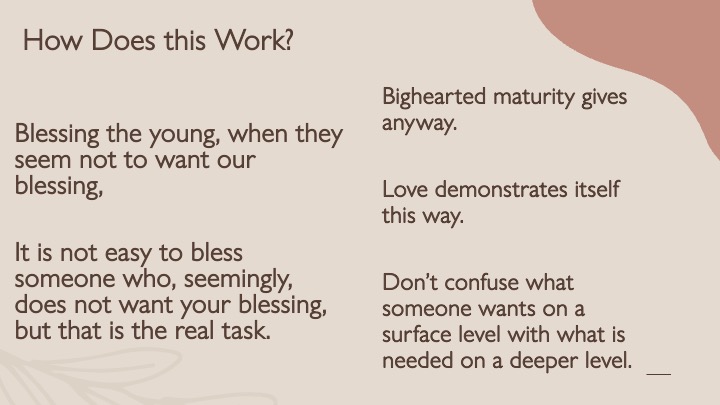
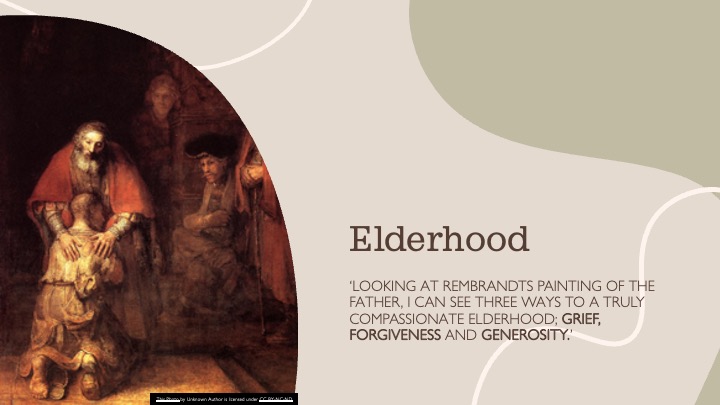
Growing Older 3
Links
< Home Page > < Growing Older Menu >
Growing Older Week 3 Text
Holy
Invitation to Growing Older
Blessing As Spiritual Maturity
What is
the mark of deep spiritual maturity?
What would manifest in our lives deep spiritual maturity?
§ The Fruits of the Spirit – Galatians 5:22-24
§ Love – I Corinthians 13
§ Jesus’ Teaching – Matthew 5-7
§ “The mark of a deeply mature man or woman, the mark of a very mature disciple of Jesus, and the mark of someone truly giving his or her life away is this: he or she is a person who blesses others and blesses the world, just as God does and just as Jesus did. “
§ Giving one’s life away
§ Blessing others
§ Blessing the world
§ Dietrich Bonhoeffer
“A
blessing is a visible, perceptible, effective proximity of God.”
benedicere – Latin word
bene- well or good
dicere – to speak
Dallas Willard - “Blessing is the projection of good into the life of another. It isn’t just words. It is the actual putting forth of your will for good for another person.”
Bob Goff - “Don’t tell people what they want. Tell them who they are.”
Biblical Examples of Blessing
- Creation story – It is Good!
- Jesus’ baptism – This is my son with whom I am pleased.
- Jesus’ teaching - Beatitudes in Sermon on the Mount.
- Jesus’ actions – disciples, those in need
- Hebrew Scripture– Jacob, Joseph
Father Ron Rolheiser
• Consequences of no blessing
• The opposite – a curse
• In a family
• In vocation
Characteristics of a Blessing
Seeing Someone
Speaking Well of Someone
Giving away some of your own life so that someone else can have more life.
When a Blessing is Powerful
Top Down
Gendered Blessing
When a Heart is Constricted/Wounded
When it Points to Wholeness and Delight
Baby Calf
How Does this Work?
Blessing the young, when they seem not to want our blessing,
It is not easy to bless someone who, seemingly, does not want your blessing, but that is the real task.
Bighearted maturity gives anyway.
Love demonstrates itself this way.
Don’t confuse what someone wants on a surface level with what is needed on a deeper level.
Elderhood
‘Looking at Rembrandts painting of the father, I can see three ways to a truly compassionate elderhood; grief, forgiveness and generosity.’
===============================================================
Erikson’s Theory of Psychosocial Development
A useful framework for considering how we develop our personality as we grow is Erikson’s Theory. A summary is presented below.
Erikson's theory of psychosocial development proposes that personality develops through eight stages, each marked by a unique conflict or crisis that individuals must resolve. These stages span from infancy to late adulthood, with successful resolution of each crisis contributing to a healthy personality and a sense of self. The theory emphasizes the impact of social and cultural experiences on individual development and identity formation.
Key aspects of Erikson's theory:
· Eight Stages:
Erikson identified eight stages of development, each marked by a specific psychosocial conflict.
· Psychosocial Crises:
Each stage involves a conflict between opposing forces, such as trust vs. mistrust or identity vs. role confusion.
· Resolution and Strength:
Successful resolution of a crisis leads to the development of a specific virtue or strength.
· Lifespan Development:
Erikson's theory extends beyond childhood, recognizing that personality continues to develop throughout the lifespan.
· Social and Cultural Influences:
Social interactions, cultural norms, and environmental factors play a significant role in shaping an individual's development and resolution of psychosocial crises.
The Eight Stages:
1. Infancy (Trust vs. Mistrust): Develops trust in caregivers and the world, leading to a sense of security.
2. Toddlerhood (Autonomy vs. Shame and Doubt): Develops a sense of independence and self-control.
3. Preschool Age (Initiative vs. Guilt): Explores the world and takes initiative, while also learning to manage guilt.
4. School Age (Industry vs. Inferiority): Develops competence and a sense of accomplishment in learning and activities.
5. Adolescence (Identity vs. Role Confusion): Forms a sense of self and identity, exploring different roles and values.
6. Young Adulthood (Intimacy vs. Isolation): Develops intimate relationships and a sense of belonging.
7. Middle Adulthood (Generativity vs. Stagnation): Focuses on contributing to society and leaving a legacy.
8. Late Adulthood (Integrity vs. Despair): Reflects on life and finds meaning and satisfaction.
In summary: Erikson's theory provides a framework for understanding how individuals develop a sense of self and personality throughout their lives, emphasizing the importance of resolving psychosocial crises and the influence of social and cultural experiences.